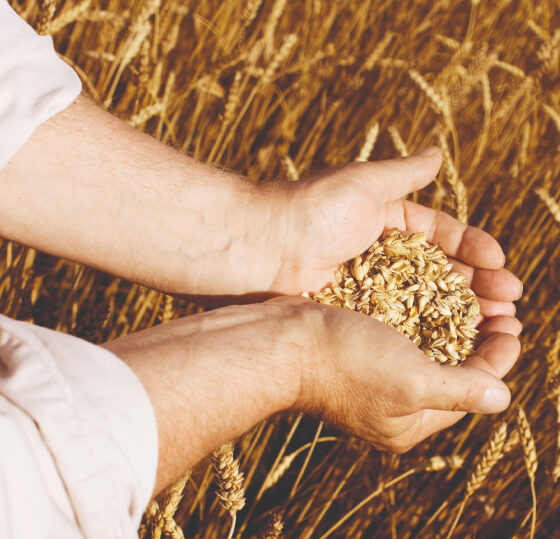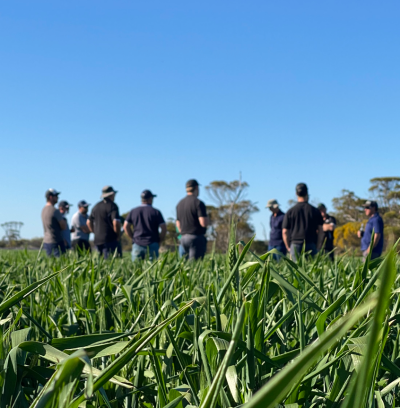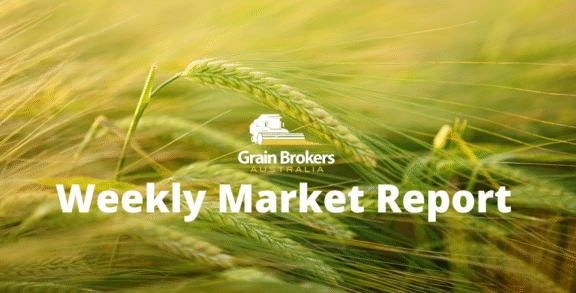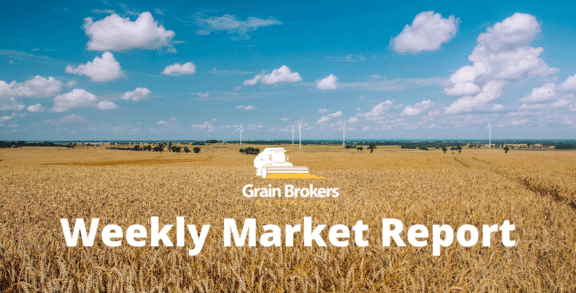
Canada’s grain industry is caught in a geopolitical tsunami as trade tensions with China and the United States leave the country’s grain farmers, who are already facing rising input costs and changing weather patterns, dangerously exposed to unprecedented economic and financial pressures.
Amid this turmoil, important decisions must be made on the composition of this season’s planting program as the winter snow melts and the seeding window approaches. To that end, the first field crop survey for 2025 planting intentions was released by Statistics Canada last week, with the area planted to wheat, corn for grain, oats and dry peas set to increase, while the seeded areas of canola, soybeans, barley and lentils are projected to decrease, compared with the previous season.
However, it should be noted that the survey, which included responses from around 8,200 individual farmers, was conducted between December 13, 2024, and January 17, 2025. This means that the crop rotation decisions and areas allocated to each commodity in this survey precede the US presidential inauguration on January 20, 2025, the subsequent tariff war, as well as China’s retaliatory tariffs on Canadian canola meal, canola oil and yellow peas.
According to the survey, the nation’s farmers plan to sow 43.1 million hectares down to principal field crops for harvest in 2025 and consumption in the 2025/26 marketing year. This is 0.8 per cent higher than the 42.76Mha planted for the 2024 harvest and 0.4 per cent above the total 2023 campaign of 42.93Mha.
The area planted to wheat this season is currently forecast to be 11.12Mha, 2.6 per cent higher than the previous year, and 1.6 per cent higher than in 2023. According to the Statistics Canada commentary, the swing may be due to strong global demand for the high-quality milling wheat generally produced across the Prairies.
The spring wheat area is expected to drive the expansion, rising 2.5 per cent to 7.86Mha, while growers have indicated that the area seeded to durum wheat will remain largely unchanged, at 2.58Mha. Producers reported an increase in the area allocated to winter wheat, with plantings in autumn last year 15.1 per cent higher season-on-season at 0.68Mha. Ontario is the main winter wheat state, accounting for more than 80 per cent of annual output.
The survey results suggest that farmers as a whole across Saskatchewan are planning to keep the total wheat expanse unchanged at 5.75Mha this season, with a decrease in the spring wheat area offset by an increase in durum wheat plantings. In Alberta, farmer responses point to a 6.6 per cent increase in the total wheat area to 3.4Mha, with the durum decrease small compared to the spring wheat expansion. The Manitoba grain grower plans to increase wheat seeding by 0.9 per cent to 1.34Mha in 2025.
Nationally, the canola area in 2025 is currently forecast to decrease by 1.7 per cent to 8.76Mha, pretty much in line with the five-year average. Saskatchewan, the biggest producing province each year, is expected to buck that trend with an increase of 1.2 per cent to 4.94Mha. Conversely, farmers in Alberta and Manitoba plan to decrease the proportion of canola in their rotation by 4.3 and 6.4 per cent, respectively, to 2.47Mha and 1.25Mha.
According to Statistics Canada, the decline in the expected canola area may be due to lower profitability relative to other crops, as well as other factors, including soil moisture issues in Western Canada. Profitability will undoubtedly be a factor now, with the equation relative to other rotation options turning further negative in the past four weeks. This is likely to manifest in a significant decline in actual canola plantings when the final area is revealed later in 2025.
The nearby ICE Canola futures contract, the global benchmark for seed trading, has fallen from a recent peak of 680.10 Canadian Dollars (CAD) on February 20, to close last Friday at CAD560.50. That is a 17.6 per cent erosion in value, with the majority of that coming last week after China announced a 100 per cent import tariff on canola oil and canola meal. While not much canola oil flows to China, Canadian crushers must now find an alternative market for around 2 million metric tonne of canola meal, with other Asian importers considered the primary targets.
On the barley front, the nationwide plantings are expected to fall to 2.54Mha, a fall of 2 per cent compared to last year’s area of 2.59Mha, but a whopping 14.3 per cent lower than the 2.97Mha planted in 2023. Barley seeding in Saskatchewan is forecast to increase by 3.7 per cent relative to last year to 0.97Mha, while area falls are projected in Alberta, down 5.6 per cent to 1.34Mha, and Manitoba, down 4.3 per cent to 120,000 hectares.
Lentils and yellow peas are the main pulse crops in Canada each year, with growers favouring the latter over the former in 2025. According to the grower survey, the lentil area will be 1.69Mha, a fall of 0.8 per cent relative to 2024. On the other hand, the yellow pea area is projected to rise 9.5 per cent year-on-year to 1.42Mha on the back of good returns last year relative to other crop options. However, China’s 100 per cent import tariff on yellow peas is bearish domestic values, with exporters needing to rehome around 500,000 metric tonne of exports annually.
In the row crop arena, Canadian growers are foreshadowing a swing to corn at the expense of soybeans, with the total area across both commodities relatively unchanged at 3.8Mha. The soybean area is forecast to decrease by 1.3 per cent to 2.28Mha, while the corn for grain area rises by 3.2 per cent to 1.53Mha. In Ontario, the primary row cropping province, the corn area is up 5 per cent to 0.93Mha and the soybean area is down 7.8 per cent to 1.17Mha.
The emerging trade tensions with the US and China aren’t only rattling the domestic market, they’re potentially altering the foundations of Canada’s economy. The financial damage won’t stop at the farm gate if the nation’s producers can’t get their grain to market. The fallout will significantly affect food processing, the domestic demand profile, logistics, traditional trade flows, capital investment across the industry, and ultimately flow onto rural communities across the country.
How the Canadian farmer alters their planting intentions in reaction to the drastically changing economic outlook will not be known for some time. Changes have undoubtedly been made already, but by the time seeders hit the fields en masse in May, those ideas could well have changed again. At the very least, the planting intentions released last week will provide a valuable benchmark against which to gauge farmer reaction to the unfolding trade impasse.
Call your local Grain Brokers Australia representative on 1300 946 544 to discuss your grain marketing needs.
Written by Peter McMeekin.





